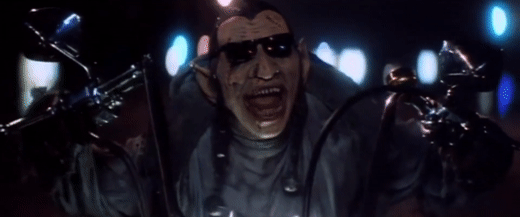#Rumpelstiltskin (1995)
Explore tagged Tumblr posts
Text
Another side-attraction on our road throughout spooky fairytales : the Rumpelstiltskin movie!
No, not the 1987 Cannon Movie Fairytale piece... But the 1995 horror movie!
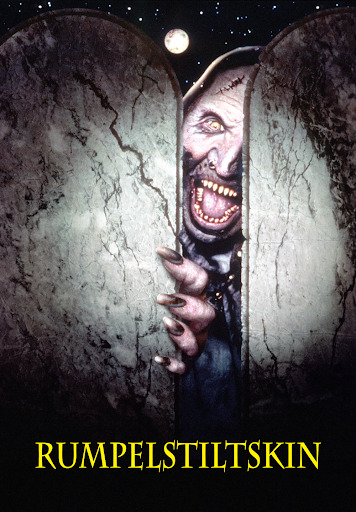
It is a little piece that most people forgot about, but it is in media story one of the first attempts at making Rumpelstiltskin a monstrous, evil fantasy creature, long before Once Upon a Time, long before Shrek: Forever After, long before The Book of Lost Things...
If you know your cult horror movies, or your B-horror movies, you'll probably understand what this movie is like and about when I'll tell you this was a Mark Jones movie, that was a followed-up to his first huge success... the movie "Leprechaun". Yep, in many ways this movie is a "Leprechaun" done again. We once again have modern (90s American) characters fighting an impish magical creature back from the past... and once again the sinister but goofy creature is driven by a single obsession (here getting ownership of a baby)... And once again you have a horror movie mixing cartoonish humor in its dark story.
This movie flopped REALLY hard on its release and was for a very long time considered as a prime example of campy horror movies (in a bad way) and of bad 90s horror movies. However, more recently the piece has been rediscovered and re-appreciated. While everybody agrees that it is not a great movie and not designed to be any serious piece of cinema, people find now that it works very well as a dark and fun gory-cartoony comedy, with a term perfectly encompassing it on the movie's page: a "dark farcical fairytale". Many call it a "so bad it is actually good" movie, and it seems the consensus is that the absurdity of the movie is (according to Wikipedia) whether what makes the movie great or bad depending on the person.
I am saying all that, taken from Wikipedia and movie reviews, because I have to admit I did not watch the movie myself. I plan to, in the future, but since I do not have much time for now, I will rely on these secondary sources and mention the existence of this movie in the list of "fairytale horror" pieces.

A video on Youtube that I found very informative and interesting is this one right here. It is not a review detailling the plot or the story of the movie, but as the title says an "analysis" that rather explores the origins, the context and the making of the movie - how and why it came to be as it is. This video most notably draws a comparison between this and the Leprechaun movie, with the intention of showing that, despite Leprechaun getting all the fame and Rumpelstiltskin being forgotten, the latter is actually of better quality than the former. Overall a very interesting watch.
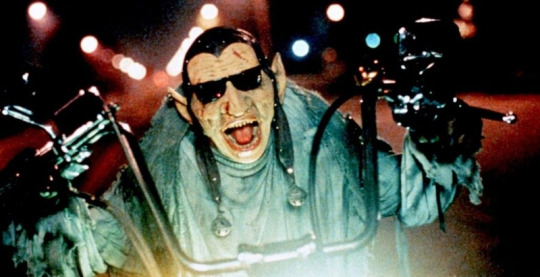
#spooky season#dark fairytales#fairytale horror#fairytale movies#horror movies#rumpelstiltskin#rumpelstiltskin 1995#leprechaun#leprechaun 1993
3 notes
·
View notes
Text
Now: "I can't believe they're making horror movies out of classic children's stories!" The '90s:



---Nat Brehmer
3 notes
·
View notes
Note
I absolutely love your style and was wondering as a cinemaphile what obscure, off the wall horror movies would you suggest for the spooky season?
Uhhhh how about various levels of obscure from the 80s and 90s? (Not a complete lists because I’ve seen literally thousands of films and forget half of what I watch and use Letterboxd to keep track)
1999– Idle Hands, Don’t Look Under the Bed, Bats, Ravenous, In Dreams, Lighthouse, Stir of Echos, Audition, Kolobos
1998—The Last Broadcast, Devil in the Flesh, Whispering Corridors, Urban Legend, Shadowbuilder, The Eternal, The Quiet Family, Strangeland, Deep Rising, The Wisdom of Crocodiles, Tomie
1997– The Relic, The Ugly, Event Horizon, Cure, Wax Mask, Snow White: A Tale of Terror, Quicksilver Highway, Office Killer, The Night Flier
1996– From Dusk til Dawn, Little Witches, Uncle Sam, The Frighteners, The Dentist, Karmina, Thesis, Tromeo & Juliet,
1995– Blood & Donuts, Screamers, Tales from the Hood, The Demolitionist, Mushrooms, The Girl With the Hungry Eyes, The Day of the Beast, Serpent’s Lair, Rumpelstiltskin, Mute Witness, Evil Ed, Project: Metalbeast, Habit, The Addiction, Tales From the Crypt: Demon Knight, Lord of Illusions
1994– Tammy & the T Rex, In the Mouth of Madness, Lurking Fear, Cemetery Man, Death Machine, Brainscan, Nadja
1993– Love Bites, Doppelgänger, Necronomicon, Body Bags, Ed & His Dead Mother, Dark Waters, Skinner, Jack Be Nimble, Ticks, Carnosaur, The Temp
1992– Death Becomes Her, The Vagrant, Tale of a Vampire, The Unnameable II, Innocent Blood, Dr Giggles, Auntie Lee’s Meat Pies, Aswang, Sleepwalkers, Netherworld, Split Second
1991– The Resurrected, The Boneyard, Body Parts, Popcorn, Subspecies, There’s Nothing Out There, Highway to Hell, The Runestone, Cast a Deadly Spell, Children of the Night
1990– Frankenhooker, Fear, Nightbreed, Lisa, Mom, Grim Prairie Tales, Shakma, Pale Blood, Baby Blood, Mirror Mirror, Hardware, Meridian, Def by Temptation, The Vampire Family, Reflecting Skin, Demonia
1989– Sundown: The Vampire in Retreat, Nightlife, I Madman, Dr. Caligari, The Black Cat, Paganini Horror, Phantom of the Mall: Eric’s Revenge, The Dead Pit, The Phantom of the Opera, Dead Calm, Intruder, The House of Usher
1988– Paperhouse, Spider Labyrinth, Spell Caster, Sorority Babes in the Slime-Bowl-O-Rama, Cellar Dweller, Pin, 976-EVIL, Brain Damage, Rejuvenatrix, Blood Relations, Party Line, The Unnamable, The Wicked
1987– Psychos in Love, Blood Rage, The Caller, Stagefright, Graveyard Shift, American Gothic, Street Trash, From a Whisper to a Scream, Blood Diner
1986– Spookies, Poison for the Fairies, Vamp, Gothic, Deadtime Stories, TerrorVision, Witchboard, Trick or Treat
1985– The Doctor and the Devils, Phenomena, The Stuff
1984– Decoder, The Company of Wolves, Monster Dog, Sole Survivor, Special Effects
1983– The Lift, Wilczyca (She Wolf), Eyes of Fire, House of Long Shadows, The Hunger, Angst, Curtains, Blood Beat, Mortuary, The Keep
1982– Ferat Vampire, Next of Kin, The Sender, Tenebre, One Dark Night, The Living Dead Girl, Superstition, Alone in the Dark, Parasite
1981– The Black Cat, Fear No Evil, Dead & Buried, Possession, Night School, The Monster Club, Allison’s Birthday, Frightmare, Ghost Story, The Funhouse, The Pit, Evilspeak, Strange Behavior, The Nesting
1980– Macabre, Fade to Black, The Ninth Configuration, The Legend of Sleepy Hollow
These are all just what I’ve recorded on my personal Letterboxd since I started it in April of 2017, I’ve seen plenty more but tried to just pick possibly less-known stuff, some bad and some good.
#go ask Alice#movie questions#horror movies#movie recs#tried to skip stuff that was too… bad-taste-rapey-squicky and things shot on video
155 notes
·
View notes
Text
what's that? new original content? what can I say...? October is my busiest time of the year. I'm sure my fellow creatures can sympathize. hell, I'm only really just now recovering. and Yule is on the horizon now? oof
anywho! I present a list of goblin movies for your viewing pleasure. whether that means movies with decent depictions of goblins, or movies with characters who have intense goblin energy, there is no discernable order. enjoy, and if you have suggestions for films I've missed, do share!
Top Goblin Movies
Munchies (1987)
Little Monsters (1989)
Unwelcome (2023)
The Hallow (2015)
Legend (1985)
The Gate (1987)
Ghoulies (1985)
Don't Be Afraid of The Dark (2010)
Labyrinth (1986)
Rumpelstiltskin (1995)
Gremlins (1984)
The Dark Crystal (1982)
honourable mentions:
Sorority Babes in the Slimeball Bowl-O-Rama (1988)
Hobgoblins (1988)
Hobgoblins 2 (2009)
Drop Dead Fred (1991)
Beetlejuice (1988)
The Hole in The Ground (2019)
#goblincore#goblin culture#goblin community#goblin vibes#goblin things#goblin thoughts#goblin behaviour#goblin brain#goblin energy#goblin posting#goblin shit#goblin speaks#goblin movies#goblin hours#goblins#goblin king#goblin#movies#movie suggestions
14 notes
·
View notes
Text
So... my crushes throughout the years have been Captain Von Trapp in The Sound of Music, Robert Carlyle as Rumpelstiltskin in Once Upon a Time, Jamie Kennedy as Randy in Scream, Colin Firth in Pride and Prejudice 1995, James Marsden as Cyclops in X-Men, and Danny Kaye in White Christmas/The Court Jester. ...I’m confused at myself.
#movies#books#classics#classic movies#the sound of music#once upon a time#pride and prejudice#white christmas#the court jester#Danny Kaye#Colin Firth#Robert Carlyle#Captain Von Trapp#Rumplestiltskin#James Marsden#X-Men#comics#marvel#cyclops#Scott Summer#scream#randy meeks
62 notes
·
View notes
Text
Retro Trailer: Rumpelstiltskin (1995)
youtube
Disclaimer: I am not associated with the uploader nor the creators of this trailer.
#rumplestiltskin#fairy tales#dark fairytale#horror#vintage horror#retro#vintage#vintage trailer#retro horror#retro cinema#retro trailer#classic trailers#horror movie trailers#90s horror movies#90s horror#horror movies#horror film#90s fantasy#horror fantasy#fantasy horror
5 notes
·
View notes
Text
films watched in july 2024
174. Godzilla vs Biolante (1989, Omori) / 1st viewing / Criterion Channel 175. The Public Enemy (1931, Wellman) / 2nd viewing / Amazon rental 176. Jaws (1975, Spielberg) / no idea what viewing / Brattle Theatre, 35mm 177. Blow Out (1981, De Palma) / 3rd or 4th viewing / Coolidge Corner Theatre, 35mm 178. "Daffy in Wackyland" (2023, Winston) / 1st viewing / Youtube 179. Charlie's Angels (2000, McG) / not sure what viewing / Apple TV 180. The Addams Family (1991, Sonnenfeld) / no idea what viewing / 4K 181. 2nd Chance (2022, Bahrani) / 1st viewing / Max 182. Dudley Do-Right (1999, Wilson) / 1st viewing / Amazon rental 183. The Brady Bunch Movie (1995, Thomas) / not sure what viewing / Paramount Plus 184. Popeye (1980, Altman) / 3rd or 4th viewing / blu-ray 185. Mother Goose Rock 'n' Rhyme (1990, Stein) / no idea what viewing 186. I Like Bats (1986, Warchol) / 1st viewing / Severin House of Psychotic Women blu-ray box-set 187. Mission Impossible (1996, De Palma) / no idea what viewing / 4K 188. Charlie's Angels: Full Throttle (2003, McG) / 1st viewing / Apple TV 189. 3 Women (1977, Altman) / 2nd viewing / Criterion blu-ray 190. "It's the Natural Thing To Do" (1939, Fleischer) / 1st viewing 191 - 196. Faerie Tale Theatre: "Rumpelstiltskin", "The Nightingale", "Jack and the Beanstalk", "Little Red Riding Hood", "Sleeping Beauty", "Rapunzel" 197. Nobody is Innocent (1986, Minter) / 1st viewing / Criterion Channel 198. Nobody is Innocent: Twenty Years Later (2010, Minter) / 1st viewing / Criterion Channel 199. "Little Nemo" (1911, McCay & Blackton) / 1st viewing / Youtube 200. "Gertie the Dinosaur" (1914, McCay) / 1st viewing / Youtube 201. Body Heat (1981, Kasdan) / 3rd viewing / Somerville Theatre, "Hot Summer Nights" program, 35mm 202. 9 1/2 Weeks (1986, Lyne) / 1st viewing / Somerville Theatre, Hot Summer Nights program, 35mm 203. "Coreys" (2024, Streit) / 1st viewing / Youtube 204. Presumed Innocent (1990, Pakula) / 2nd viewing / Amazon rental 205. The Mad Monk (1993, To) / 1st viewing / Amazon rental 206. The Bare-footed Kid (1993, To) / 1st viewing / Amazon rental) 207. Presumed Innocent (1990, Pakula) / 3rd viewing / Amazon rental 208. Alan Pakula: Going for Truth (2019, Miele) / 1st viewing / Max 209. Tomb Raider (2001, West) / 2nd viewing / Paramount Plus 210. Inside Daisy Clover (1965, Mulligan) / 2nd viewing / Blu-ray 211. Rat Fink (1965, Landis) / 2nd viewing / Blu-ray 212. Godzilla vs Hedorah (1971, Banno) / 2nd viewing / Coolidge Corner Theatre, "Godzilla vs the Coolidge" series, DCP 213. The First Omen (2024, Stevenson) / 1st viewing / Hulu 214. Scum of the Earth! (1963, Lewis) / 1st viewing / Blu-ray 215. Evening Primrose (1966, Bogart) / 1st viewing / Youtube rental 216. The Chase (1966, Penn) / 1st viewing / Criterion Channel 217. Lara Croft: Tomb Raider - The Cradle of Life (2003, De Bont) / 1st viewing / Paramount Plus 218. Uncharted (2022, Fleischer) / 1st viewing / Hulu 219. The Champion (1957, Inoue) / 1st viewing / file 220. Twisters (2024, Chung) / 1st viewing / theaters
#films seen in 2024#films seen#shelley duvall#faerie tale theatre#popeye#mother goose rock n rhyme#godzilla#glen powell#the first omen
4 notes
·
View notes
Text
Another thang stolen from my friend Glam
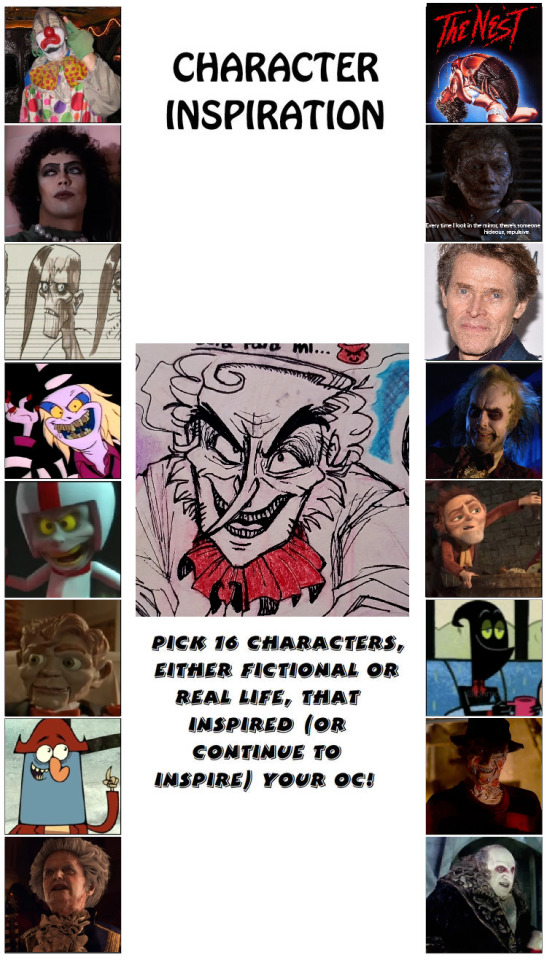
[The image is a character inspiration template for the OC "Rotgut", that includes the following: insult-comedian Yucko the Clown; dr. Frank-N-Furter from "The Rocky Horror Picture Show" (1975); Ratgut from "Brütal Legend" {VOICECLAIM} ; Beetlejuice from the "Beetlejuice" cartoon (1989); Turbo/King Candy from "Wreck-It Ralph" (2012); Slappy the dummy from "Goosebumps" (1995); Captain K'nuckles from "The Marvelous Misadventures of Flapjack" (2008); Ramón Salazar from "Resident Evil 4" (2023 remake); the cockroach monsters from "The Nest" (1988); dr. Brundle/'Brundlefly' from "The Fly" (1986); actor Willem Dafoe {FACECLAIM}; Beetlejuice from Tim Burton's "Beetlejuice" (1988); Rumpelstiltskin from "Shrek Forever After" (2010); Nergal from "The Grim Adventures of Billy & Mandy" (2001); Freddy Krueger from "A Nightmare on Elm Street" (1984-1991 film franchise); the Penguin/Oswald Cobblepot from "Batman Returns" (1992). End description.]
Also you'll have to forgive me on the top right corner I just included the entire movie cover because that was easier to compress than the cockroach queen because uhhh
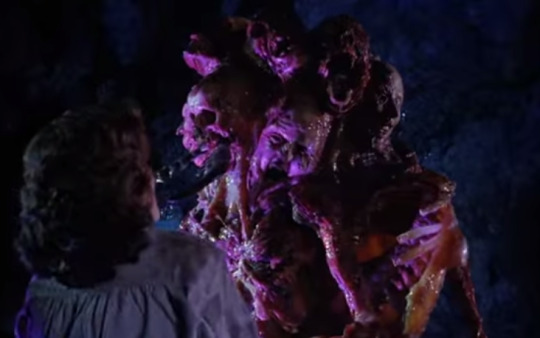
Yeah. I feel like the image would turn into nothing but pixels if I tried shrinking this.
#look at us ( mun art )#mi amor ( rotgut aesthetic )#roots from the past ( oc info/backstory )#body horror tw#insects tw
10 notes
·
View notes
Text
J.T. Walsh (1999)
I like Oliver Stone movies, but I stayed away from his Nixon when it was in the theaters in 1995, and never rented it on video. As the child of good California Democrats, I grew up hating Nixon. When I was in my twenties and he was president, he gave me more reason to hate him than I ever wanted. When he died I didn’t want to think about him anymore.
One night, though, flipping channels after the late news had closed down, I happened onto Nixon running on HBO, and I didn’t turn it off. I was pulled in, played like a fish through all the fictions and flashbacks, dreaming the movie’s dream: waiting for Watergate.
It came into focus with a strategy session in the Oval Office. Anthony Hopkins’s Nixon is hunching his shoulders and looking for help. James Woods’s impossibly reptilian H. R. Haldeman is stamping his feet like Rumpelstiltskin and fulminating about “Jew York City.” Others raise their voices here and there—and off to the side is J. T. Walsh, the canniest and most invisible actor of the 1990s, doodling.
As almost always, Walsh was playing a sleaze, a masked thug, here a corrupt government official, White House adviser and Watergate conspirator John Ehrlichman—as elsewhere he has played a slick Hollywood producer, a college-basketball fixer, the head of a crew of aluminum siding salesmen, a porn king who makes home sex videos with his own daughter, a slew of cops (Internal Affairs bureaucrat on the take in Chicago, leader of a secret society of white fascists in the LAPD), and a whole gallery of con artists, confidence men who seem to live less to take your money than for the satisfaction of getting you to trust them first.
Walsh in the Oval Office is physically indistinct; he usually was. At fifty-two in 1995 he looked younger, just as he looked older than his age when, after eight years as a stage actor—most notably as the frothing sales boss in David Mamet’s Glengarry Glen Ross—he began getting movie roles in 1986. Except near the end of his life, when his weight went badly out of control, his characters would have been hard to pick out of a lineup. Like Bill Clinton he was fleshy, vaguely overweight, with an open, florid, unlined face, a manner of surpassing reasonableness, blond in a way that on a beige couch would all but let him fade into the cushions. He had nothing in common with even the cooler, more sarcastic heavies of the forties or the fifties—Victor Buono’s police chief in To Have and Have Not, say, or the coroner in Kiss Me Deadly, their words dripping from their mouths like syrup with flies in it. He had nothing to say to the heavies appearing alongside of him in the multiplexes—Dennis Hopper’s psychokillers, Robert Dalvi’s scum-suckers, Mickey Rourke, with slime oozing through his pores, the undead Christopher Walken, his soul cannibalized long ago, nothing left but a waxy shell.
Walsh’s characters are extreme only on the inside, if he allows you to believe they are extreme at all; as he moves through a film, regardless of how much or how little formal authority his character might wield, Walsh is ordinary. You’ve seen this guy a million times. You’ll see him for the rest of your life. “What I enjoy most as an actor,” he said in December 1997, two months before his death from a heart attack, “is just disappearing. Most bad people I’ve known in my life have been transparent. Not gaunt expressions—they’re Milquetoasts. It’s Jeffrey Dahmer arguing with cops in the streets about a kid he’s about to eat—and he convinces them to let him keep him. And takes him back up and eats him. What is the nature of evil that we get so fascinated by it? It’s buried in charm, it’s not buried in horror.”
Walsh’s charm—what made you believe him, whether you were another character standing next to him in a two-shot, or watching in the audience—was a disarming, everyday realism, often contrived in small, edge-of-the-plot roles, his work with a single expression or a line staying with you long after any memory of the plot crumbled. As a lawyer happily tossing Linda Fiorentino criminal advice while an American flag waves in the breeze outside his window, Walsh taps into a profane quickness that for the few moments he’s on-screen dissolves the all-atmosphere-all-the-time film noir gloom of John Dahl’s The Last Seduction. In The Grifters, as Cole Langley, master of the long con, he radiates an all-American salesman’s glee (“Laws will be broken!” he promises a mark) that makes the hustlers holding the screen in the film—Anjelica Huston, John Cusack, Annette Bening—seem like literary conceits. Yet it all comes through a haze of blandness, as it does even when Walsh plays a sex killer, a crime boss, a rapist, a racist murderer, as if at any moment any terrible impression can be smoothed away: How could you imagine that’s what I meant?
In the Oval Office his Ehrlichman, whom America would encounter as the snarling pit bull lashing back at Senator Sam Ervin’s Watergate investigations committee, retains only the blandness, occasionally offering no more than “I don’t know if that’s such a good idea” before returning to his doodles. It was this blandness that allowed Walsh to flit through history—in Nixon playing White House fixer Ehrlichman; in Hoffa Teamster president Frank Fitzsimmons, locked into power by a deal that Ehrlichman helped broker; in Wired reporter Bob Woodward, who helped bring Ehrlichman down—but as Walsh sits with Nixon and Haldeman and the rest you can imagine him absenting himself from the action as it happens, instead contemplating all the roles in all the movies that have brought him to the point where he can take part in a plot to con an entire nation.
What makes Walsh such an uncanny presence on-screen—to the degree that, as the trucker in the first scenes of Breakdown, or Fitzsimmons as a drunken Teamster yes-man early in Hoffa, he seems to fade off the screen and out of the movie, back into everyday life—is that while the blandness of his characters may be a disguise, it can be far more believable than whatever evil it is apparently meant to hide. Even as it is committed, the evil act of a Walsh character can seem unreal, a trick to be taken back at the last moment, even long after that moment has passed—and that is because his characters, the real people he is playing, can appear to have no true identity at all. You can’t pick them out of the lineups of their own lives.
At the very beginning of his film career, in 1987, in David Mamet’s House of Games, Walsh is the dumb businessman victim of a gang of con men running a bait-and-switch, then a cop setting them up for a bust, then a dead cop, then one of the con men himself, alive and complaining, “Why do I always have to play the straight man?” The straight man? you ask him back. In Breakdown, in a rare role in which he dominates a film from beginning to end, he first appears as a gruffly helpful trucker giving a woman a ride into town while her husband waits with their broken-down car. She disappears, and when the husband finally confronts the trucker, with a cop at his side, Walsh’s irritated denial that he’s ever seen his man before in his life seems perfectly justifiable—even if, as Walsh saw it, that scene “had a residual effect on the audience. ‘Don’t catch me acting’—when I lied, deadpan, on the road, you hear people in the audience: ‘He’s lying!'”The moment came loose from the plot, as if, Walsh said, “I’m not just acting”—and that, he said, was where all the cheers in the theaters came from when in the final scene he dies. He had fooled the audience as much as the other characters in the movie; that’s why the audience wanted him dead.
Walsh’s richest role came in John Dahl’s Red Rock West. The mistaken-identity plot—with good guy Nicolas Cage mistaken for hit man Dennis Hopper—centers on Walsh’s Wayne Brown, a Wyoming bar owner who’s hired one Lyle from Texas to murder his wife. As Brown, Walsh is also the Red Rock sheriff—and he is also Kevin McCord, a former steelworks bookkeeper from Illinois who along with his wife stole $1.9 million and was last seen on the Ten Most Wanted list. Walsh plays every role—or every self—with a kind of terrorized assurance that breaks out as calm, certain reason or calm, reasoned rage. He’s cool, efficient, panicky, dazed, quick, confused. You realize his character no longer has any idea who he is, and that he doesn’t care—and that it’s in the fact that they don’t care that the real terror of Walsh’s characters resides. You realize, too, watching this movie, that in all of his best roles Walsh is a center of nervous gravity. His acting, its subject, is all about absolute certainty in the face of utter doubt. Yes, you’re fooled, and the characters around Walsh’s might be; you can’t tell if Walsh’s character is fooled or not.
At the final facedown in Red Rock West, all the characters are assembled and Dennis Hopper’s Lyle is holding the gun. “Hey, Wayne, let me ask you something,” he says. “How’d you ever get to be sheriff?” “I was elected,” Walsh says with pride. “Yeah, he bought every voter in the county a drink,” his wife sneers—but so what? Isn’t that the American way? Get Walsh out of ‘this fix and it wouldn’t have been the last election he won.
Watching this odd, deadly scene in 1998, I thought of Bill Clinton again, as of course one never would have in 1992, when Red Rock West was released and Clinton was someone the country had yet to really meet. In the moment, looking back, seeing a face and a demeanor coming together out of bits and pieces of films made over the last dozen years, it was as if—in the blandness, the disarming charm, the inscrutability, the menace, the blondness, moving with big, careful gestures inside a haze of sincerity—Walsh had been playing Clinton all along. He was not, but the spirit of the times finds its own vessels, and, really, the feeling was far more queer: it was as if, all along, Bill Clinton had been playing J. T. Walsh.
2 notes
·
View notes
Text
Podcast #182: Rumpelstiltskin (1995) & Dark Fairy Tales
Welcome to Episode #182 of The Swampflix Podcast. For this episode, Brandon, James, Britnee, and Hanna discuss a grab bag of dark, horrific takes on classic fairy tales, starting with the 1995 creature feature Rumpelstiltskin. 00:00 Welcome 02:14 Finde (2021)05:30 The Little Mermaid (1968)08:37 The Cremator (1969)16:40 The Firemen’s Ball (1967)21:51 Assault on Precinct 13 (1976) 26:41…

View On WordPress
#beauty and the beast#brandon ledet#britnee lombas#fairy tales#freeway#Hanna Räsänen#horror#james cohn#little red riding hood#Podcast#rumpelstiltskin#snow white
0 notes
Photo
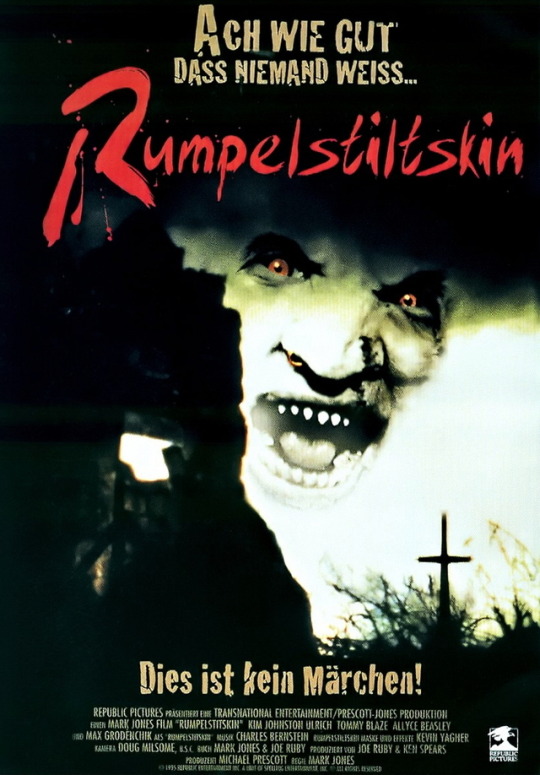
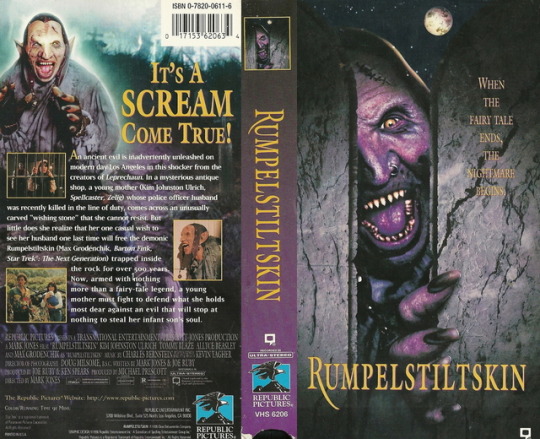
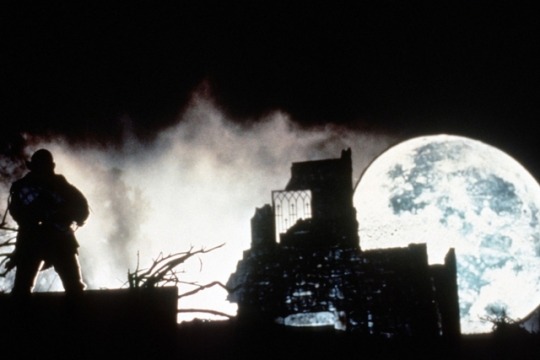
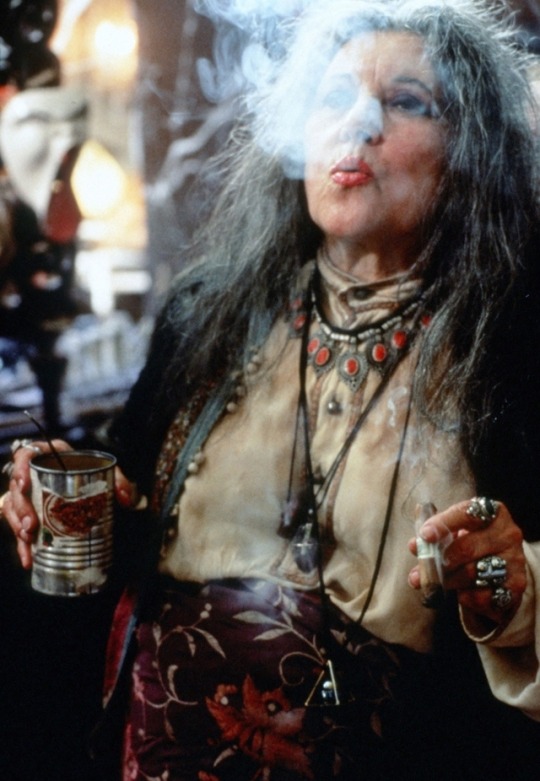
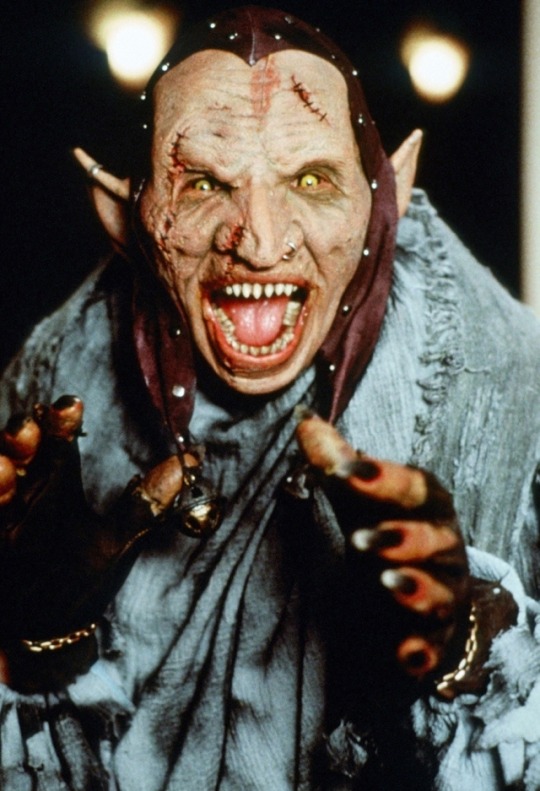
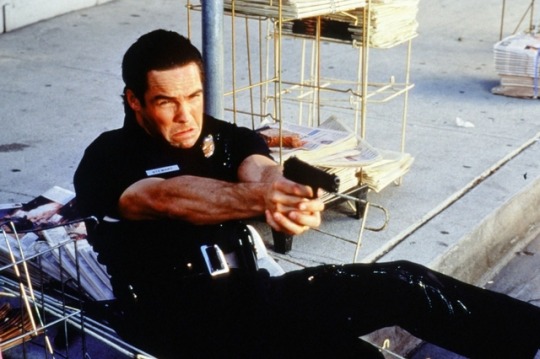


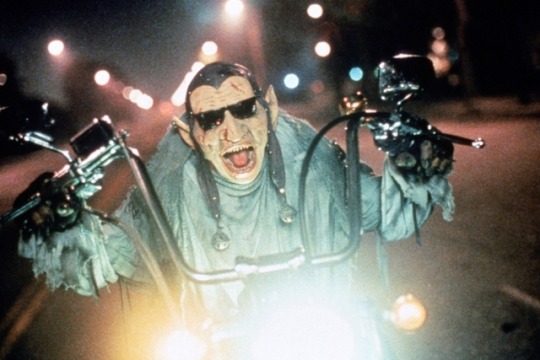
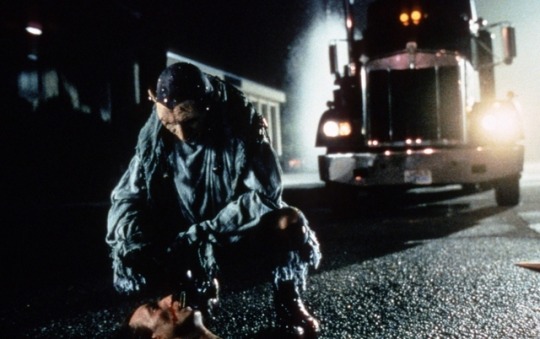
Rumpelstiltskin (1995)
#Rumpelstiltskin 1995#Rumpelstiltskin#Kim Johnston Ulrich#Max Grodenchik#Max Grodénchik#Mark Jones#Joe Ruby#VHS
2 notes
·
View notes
Text
You guys ever watch Rumpelstiltskin (1995)? Highlight of the movie is the dude playing the titular villain. He’s almost always squatting on-screen. I wonder if that was hell on the actor’s knees.
1 note
·
View note
Photo

Rumpelstiltskin (1995)
59 notes
·
View notes
Text
BA1b Research Narrative week 3
Fairy Tales, what is it?
Encyclopedia Britannica describes a fairy tale as:
‘a wonder tale involving marvelous elements and occurrences, though not necessarily about fairies.’
According to Vladimir Propp ‘A fairy tale may be termed any development proceeding from villainy or a lack through intermediary functions to marriage or to other functions employed as a denouement’ (1968, p. 92).
Fairy Tale doesn’t have to be your classic Disney film, but fairy tales do end ‘happily’.
‘Happily,’ means that justice is served.

In the Grimms’ Snow White, the stepmother is forced to dance to her death in red-hot iron slippers fresh from the fireÉ This is a ‘happy’ ending.
Fairy tales come to a definite conclusion, an ‘orderly resolution’ (Warner, 1994).
The Origins
Märchen
Popular folktales, oral in origin. These pre-date written records, so it’s difficult to be sure about their exact origins. Many are hundreds, possibly thousands, of years old.
Kunstmärchen
Literary or artistic fairy tales.
Mostly produced in the 19th century, such as The Happy Prince (1888) by Oscar Wilde and The Little Mermaid (1837) by Hans Christian Andersen.
The oldest Fairy tales weren’t intended for children, but evidence suggests that they had serious meanings and contained important ritualistic elements. The clear polarity between good and evil acted as a warning of what might happen if you strayed from the righteous path. We can draw links with myth (and perhaps also religion) although myths are arguably more impossible? Because we can never be that heroic or that perfect in our actual lives.
By contrast, fairy tales, in spite of their ‘wonderful’ – or magical – aspects, are about ‘everyman’ and ‘everywoman’. Characters are rarely named (they could be us). Initiative, endurance, bravery, and patience can help everyone overcome giants, beasts and witches.
Blood and gore!
First written down by Charles Perrault (1697) Bluebeard tells the cheerful tale of a woman who marries a serial killer! The indelibly bloody key to his forbidden chamber is the only magic element in the story.
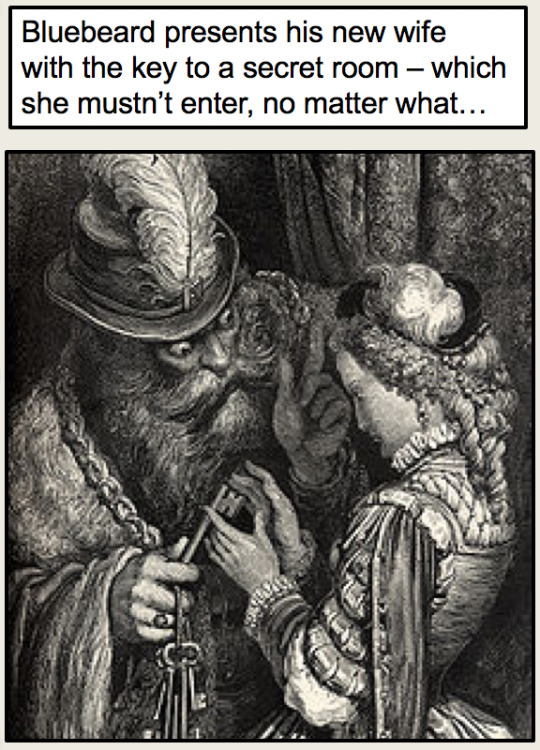
Bluebeard presents his new wife with the key to a secret room which she mustn’t enter, no matter what. Inside the room are all his dead wives (as depicted in Georges Méliès’ 1901 film version)

(In the mediaeval versions of Cinderella her step-sisters slice off their toes to fit the slipper)
The step-sisters (who are physically beautiful but inwardly ugly) are punished by having their eyes pecked out by pigeons.
This dark inversion of the birds who ‘help’ Cinderella offers another warning – suggesting that the natural world can only ever be appeased, not tamed. And the glass slipper was originally made of squirrel fur.
Pan’s Labyrinth (2006) is a great example of a modern Fairy tale done in the same aesthetic as the old medieval fairy tales.

Function 12, ‘The hero is tested, interrogated, attacked, etc., which prepares the way for his receiving either a magical agent or helper.’ (Propp, 1968, p. 39).
Sex!
In ‘The Grandmother’s Tale’ there’s no red hood (or cap). The wolf is a ‘bzou’ (werewolf) and the unnamed girl must choose between 2 paths: the path of pins (virtue) or the path of needles – needles being a symbol of ‘penetration’.
(Unlike Lucy Sprague Mitchell and others) Disney approved of fantasy
He wanted it to come ‘fully alive for those who dream’ (Stone, 1981).
‘As we do it, as we tell the story, we should believe it ourselves. It’s a “once upon a time” story and we shouldn’t be afraid of a thing like that’ (Walt Disney in notes for Cinderella, 15th January 1948, from the Disney archive).
Happy ever after?
The fairy tale scholar Jack Zipes (2011) accuses the ‘Disney versions’ of being so overwhelming that our idea of happiness is now ‘filtered through a Disney lens’. According to Zipes, these films ‘reinforce stereotypes and help maintain the patriarchal order’.
But the Grimms, writing in 1812, weren’t exactly radical gender revolutionaries.
In fact, scholars have noted that the fairy tale format begins with the disintegration of a family unitÉ and ends with the creation of another (through marriage).
Peace, stability, patriarchal order is maintained. This is the very nature of the fairy tale.
Nostalgia: the Disney version
But ironically, as noted by Zipes (1995), Disney used ‘the most up-to-date technological means to maintain the ‘old world’ order.
Animation allowed the believable creation of a fantasy world – and the recreation of a specifically ‘19th century’ patriarchal order. As Dan North (2009) says, in a (good quality!) blog about Lotte Reiniger’s fairy tale films, ‘animation allows the construction of a completely fabricated fantasy space’.
Propp’s ‘functions’ 1 and 31
Function 1
One of the members of a family absents himself from home.
Function 31
The hero is married and ascends the throne.
Before Propp fairy tale were categorised differently e.g. in the Aarne-Thompson Classification System) according to ‘type’ or ‘motif’:
• Animal stories
• Fantastical stories
• Stories of everyday life
• Stories including the appearance of a dragon
•
But many tales belonged in more than one category. The system did nothing to illuminate the underlying structure of the fairy tale. Propp was the first to make a sequential structural analysis of the fairy tale: what happens, in what order.
The Law of Contrast – other people should be antithetical to the hero; therefore, if the hero is generous, other characters should be ‘stingy’ to contradict him.
The Law of Repetition – actions in folk tales are typically repeated 3 times
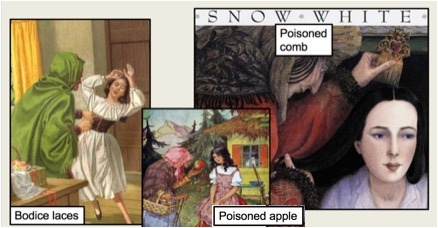
The Law of Twins: two people can appear together in the same role, and should be similar in nature
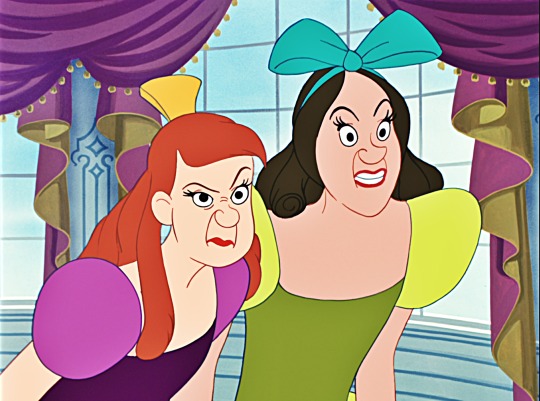
The Law of Contrast – other people should be antithetical to the hero; therefore, if the hero is generous, other characters should be ‘stingy’ to contradict him. The same way Cinderella is contrasting to her evil sisters in every way, physically and mentally.
Then along came Propp…
In his 1928 work Morphology of the Folktale the Russian formalist Vladimir Propp analysed 100 Russian fairy tales and found striking similarities between them. Propp was analysing chronological story rather than plot. But please note that the traditional fairy tale – unlike many other forms of narrative, ‘which play with chronology’ (Puckett, 2016, p. 184) – is plotted in chronological order.
Propp stated 4 fundamental principles (1968, pp. 21–23)
1. Functions of characters serve as stable, constant elements in a tale, independent of how and by whom they are fulfilled. They constitute the fundamental components of a tale.
2. The number of functions known to the fairy tale is limited. As we have seen, Propp says there are only 31 (at least, in the Russian tales he analysed).
3. The sequence of functions is always identical.
4. All fairy tales are of one type in regard to their structure.
He found that all 100 of the tales he analysed were built on a pattern drawn from 31 functions, occurring in a set order. In other words, only 31 things can happen in a fairy tale. But, the word ‘morphology’ means the study of forms, and in doing this work Propp was analysing form as separate from content.
Function 14: the hero acquires the use of a magical agent.
‘It doesn’t matter (on the level of plot) whether someone is given a magic horse or buys some magic beans or steals a magic sword. The key thing is that they [i.e. the hero] have received a magical object’ (Thomas, 2012, p. 107).
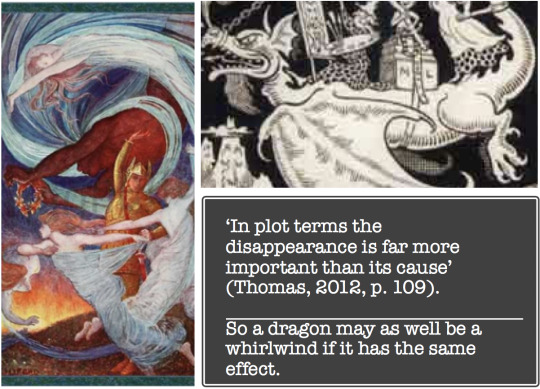
Propp identified 7 key characters who each have their own ‘sphere of action’
• The Villain
• The Donor
• The Helper
• The Princess (or ‘sought-for person’) and her Father (who function as a single ‘agent’)
• The Dispatcher
• The Hero
• The False Hero
Characters are not fixed, and a single character may inhabit more than one ‘sphere of action’. If a villain inadvertently gives something important to the hero, then he or she is also at that moment acting as a donor.
The hero: there are two types in a fairy tale
Directly suffers from the action of the villain in the complication (victim-hero)
Agrees to liquidate the misfortune or lack of another person (seeker hero)
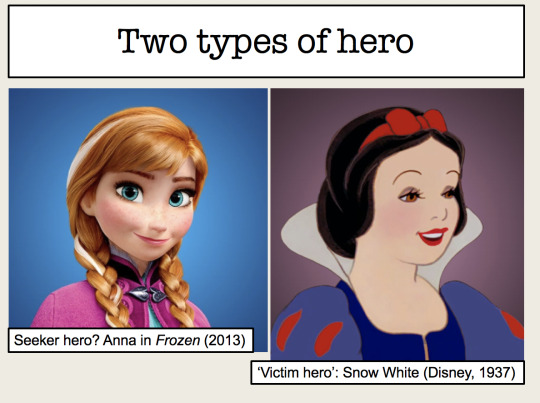
The villain
• The villain appears twice. ‘First, he makes a sudden appearance from outside (flies to the scene, sneaks up on someone)’.
• The ‘second appearance’ is as a person ‘who has been sought out’.
The princess
• She is ‘sought after’ often a ‘reward’ that the hero (eventually) receives.
• Often bound up with her ‘father’
• appears twice, the second time ‘she is introduced as a personage who has been sought out’.
The donor
• ‘The donor is encountered accidentally’.
• The donor provides the hero with a magical object or helper (may do so unwillingly).
• Not necessarily benevolent, e.g. Rumpelstiltskin gives a magical gift to a miller’s daughter (spins straw into gold) but demands her firstborn child in return.
The magical helper is introduced as a gift
Disney’s Fairy Godmother (1950) could be seen as a donor (who presents Cinderella with ‘magical helpers’, i.e. footmen for her carriage) or as the ‘helper’ herself.
In general, the donor tests the hero somehow.
The false hero
Assumes the role of hero but is unable to complete the hero’s task, e.g. Lord Farquaad in Shrek (2001)
The dispatcher
Sends the hero away for some reason – therefore, often plays a pivotal role in inciting the action (similar to Vogler’s ‘herald’ archetype).
Function 8
‘This function is exceptionally important, since by means of it the actual movement of the tale is created’ (Propp, 1968, p. 31).
The first 7 functions ‘prepare the way for this function, create its possibility of occurrence, or simply facilitate its happening.’ (The first 7 functions set up the action.)
5 notes
·
View notes
Photo

Hoje o Excelentíssimo Sir Christopher Lee completaria 100 anos 👏👏👏 Christopher Lee foi um ator britânico conhecido por sua versatilidade e longevidade cinematográfica (cerca de 66 anos na ativa), além de um notório cantor de ópera e metal progressivo. Ele começou sua carreira no teatro, Seu primeiro personagem foi Rumpelstiltskin, antagonista do conto homônimo dos Irmãos Grimm. Lee ficou conhecido mundialmente interpretando o Conde Drácula. Foi vilão na franquia 007 interpretando o assassino Francisco Scaramanga. Atuou também na trilogia O Senhor dos Anéis e em dois filmes da trilogia O Hobbit interpretando o personagem Saruman. Sua carreira também foi marcada pelos filmes dirigidos por Tim Burton, como a Fantástica Fábrica de Chocolate, emprestou sua voz a personagens em A Noiva Cadáver e Alice no País das Maravilhas. Também atuou como Conde Dookan em Star Wars episódios II e III. Sua carreira foi bastante prolífica, com mais de 200 produções. Falava alemão fluentemente, serviu na Força Aérea Britânica entre 1941 e 1946, é primo distante de Ian Fleming, criador do personagem James Bond. Foi um dos jurados do concurso de Miss Universo de 1995. Com exceção de 1995, desde 1948 ao menos um filme estrelado por Christopher Lee foi lançado e apesar de ter atuado em mais de 200 filmes, pouquíssimas foram as vezes em que ele interpretou o herói do filme. Em cerca de 85% de seus filmes interpretou o vilão da história. Em 2009, ganhou o título de Cavaleiro Real. Além disso narrou vários álbuns da banda Rhapsody of Fire. Era ligado a PETA entidade que luta pelos direitos dos animais. Christopher Lee também foi voluntário em apoio ao exército finlandês durante a Guerra de Inverno contra a União Soviética, entre os anos 1939 e 1940. Lee dublou 16 jogos eletrônicos para consoles, PC e portáteis ao longo da sua carreira. Ele também foi o único do elenco de O Senhor dos Anéis a conhecer J.R.R Tolkien pessoalmente. Lee morreu no dia 7 de junho de 2015, aos 93 anos de idade no hospital Chelsea e Westminster, em Londres, onde estava internado por problemas de insuficiência cardíaca e respiratória Fica aqui nossa singela homenagem a esse homem tão querido por nós, fãs. (em Indaiatuba-SP) https://www.instagram.com/p/CeUZeBIOCK8/?igshid=NGJjMDIxMWI=
1 note
·
View note
